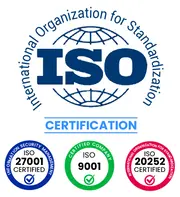US Corneal Cross-Linking Devices Market Overview
As per MRFR analysis, the US Corneal Cross-Linking Devices Market Size was estimated at 42 (USD Million) in 2023. The US Corneal Cross-Linking Devices Market is expected to grow from 47.6 (USD Million) in 2024 to 183 (USD Million) by 2035. The US Corneal Cross-Linking Devices Market CAGR (growth rate) is expected to be around 13.023% during the forecast period (2025 - 2035)
Key US Corneal Cross-Linking Devices Market Trends Highlighted
The rising incidence of keratoconus and other corneal conditions is propelling the US market for corneal cross-linking devices. Key market drivers include patients' and healthcare professionals' knowledge of and acceptance of corneal cross-linking as a safe and efficient treatment option.
The demand is also increased by the ageing population since advanced treatment options are required for age-related eye problems. Furthermore, US government policies and healthcare programs that support eye health and provide capital for cutting-edge therapies are important drivers of market growth. This sector offers a lot of opportunities, especially in light of technological improvements.
More effective and efficient treatment alternatives will result from the development of newer devices with better materials and techniques. Opportunities for improvement include the use of minimally invasive procedures and the capacity to tailor care for specific individuals.
Additionally, increasing insurance coverage and reimbursement guidelines for corneal cross-linking treatments could improve patient accessibility and encourage broader US use. More clinical trials and research are being conducted to confirm the effectiveness and safety of corneal cross-linking procedures, according to recent developments.
Ophthalmologists and device makers are increasingly working together to provide creative solutions that are especially suited to the demands of the US market. The market is set up for continued growth as long as regulatory agencies keep reviewing and approving innovative technology.
As the US Corneal Cross-Linking Devices Market continues to change, the incorporation of digital health technologies into pre-and post-operative care indicates a move towards more all-encompassing treatment frameworks.

Source: Primary Research, Secondary Research, MRFR Database and Analyst Review
US Corneal Cross-Linking Devices Market Drivers
Increasing Prevalence of Keratoconus
The rising number of keratoconus patients in the United States is a significant driver for the US Corneal Cross-Linking Devices Market. According to data from the National Eye Institute, keratoconus affects approximately 1 in 2,000 people in the US, with the number of diagnosed cases increasing by about 20% annually due to better awareness and advances in diagnostic methods.
Organizations like the American Academy of Ophthalmology are actively promoting awareness and education regarding keratoconus, which leads to increased demand for corneal cross-linking procedures.
This growing prevalence suggests a substantial market potential for corneal cross-linking devices, translating to a heightened focus on innovative therapies and technological advancements within the industry.
Technological Advancements in Treatment Methods
Innovative technologies in corneal cross-linking, such as accelerated cross-linking techniques and advanced imaging systems, are advancing the US Corneal Cross-Linking Devices Market. These technologies reduce procedure time significantly while increasing effectiveness.
Research from the American Journal of Ophthalmology notes that these advancements have improved patient outcomes with a 40% increase in treatment efficacy reported among early adopters. Institutions such as the Cleveland Clinic are already utilizing these cutting-edge technologies, further encouraging other facilities to invest in new corneal cross-linking devices, thereby propelling market growth.
Growing Regulatory Support for Procedures
Increasing regulatory support from organizations such as the US Food and Drug Administration (FDA) is fostering the growth of the US Corneal Cross-Linking Devices Market. The FDA's approval of various corneal cross-linking devices and ongoing efforts to facilitate regulatory pathways for new products signify a more favorable environment for market expansion.
The FDA has noticed a significant rise in submissions for corneal cross-linking device approvals, with a 30% increase in the last five years, allowing more manufacturers to enter the market. This regulatory clarity accelerates innovation and ensures safety, further driving market prospects in the US.
Increased Patient Awareness and Demand
Rising patient awareness regarding eye health and available treatment options is significantly boosting the US Corneal Cross-Linking Devices Market. Educational initiatives by associations like the American Cornea and Contact Lens Society aim to inform the public about keratoconus and the benefits of corneal cross-linking.
Studies have shown that patient inquiries about cross-linking procedures have doubled in the last three years, correlated with an improved understanding of the condition. This growing patient interest reflects a broader trend towards proactive healthcare seeking, which is expected to drive demand for corneal cross-linking treatments and devices in the US.
US Corneal Cross-Linking Devices Market Segment Insights
Corneal Cross-Linking Devices Market Type Insights
The US Corneal Cross-Linking Devices Market is evolving with a distinct focus on the Type segment, which includes Standard Corneal Cross-Linking, Corneal Cross-Linking Plus, and Accelerated Cross-Linking. Standard Corneal Cross-Linking remains the foundational approach in the treatment of keratoconus and other corneal diseases.
It is widely adopted due to its reliability and established efficacy. The method primarily utilizes riboflavin and ultraviolet light to strengthen corneal collagen fibers, thus halting disease progression, which elevates patient safety and satisfaction rates.
On the other hand, Corneal Cross-Linking Plus is increasingly gaining traction as it incorporates additional elements designed to enhance treatment outcomes, catering to a growing demand for more effective methodologies in this niche segment.
Furthermore, Accelerated Cross-Linking is making waves for its time-saving aspect while maintaining therapeutic efficacy, allowing for a more efficient treatment process. This segment is particularly significant in the US, where increasing incidents of corneal diseases push the need for innovative and effective treatment options.
The increasing prevalence of conditions such as keratoconus, along with an aging population, emphasizes the importance of these treatment modalities. The ongoing advancement in technology and methods further contributes to the market's growth, with more healthcare professionals recognizing the benefits of these types of cross-linking techniques.
Additionally, the increased awareness about eye health and the importance of timely intervention among patients is driving the overall demand within the US Corneal Cross-Linking Devices Market. With rising health expenditures and favorable reimbursement policies enhancing access to advanced treatments, this segment is poised for continued expansion in the coming years.
The emphasis on patient-specific outcomes and the ongoing Research and Development endeavors across these types provide a promising outlook for the future of the US Corneal Cross-Linking Devices Market.

Source: Primary Research, Secondary Research, MRFR Database and Analyst Review
Corneal Cross-Linking Devices Market Method Insights
The US Corneal Cross-Linking Devices Market is increasingly emphasizing the Method segment, which plays a crucial role in enhancing treatment efficacy for corneal conditions. The Epithelium-off Method is significant in this market, as it facilitates deeper penetration of riboflavin into the corneal stroma, thereby providing more effective cross-linking.
This method has garnered attention due to its established results in halting keratoconus progression. Conversely, the Epithelium-on Method offers a less invasive alternative, appealing to patients seeking quicker recovery times and minimal discomfort.
The ongoing preference for these techniques indicates a trend toward improving patient outcomes while balancing efficacy with safety. The rise in awareness about keratoconus and other corneal disorders, alongside developments in these methods, is expected to drive demand in the US, aligning with national health initiatives advocating for better eye care.
Furthermore, as technology advances, these Methods could also witness innovations that refine procedures, making them more accessible and effective in addressing various corneal issues, thus presenting multifaceted opportunities within the market.
Corneal Cross-Linking Devices Market Application Insights
The US Corneal Cross-Linking Devices Market application segment is experiencing notable growth, driven by the increasing prevalence of conditions like Keratoconus and Pellucid Marginal Degeneration. Keratoconus, characterized by the progressive thinning of the cornea, is a leading driver for cross-linking procedures, offering hope for patients seeking to restore their vision.
Pellucid Marginal Degeneration is another condition prompting the use of these devices, as it leads to corneal irregularities similar to Keratoconus. Furthermore, the rise of Refractive Surgery Ectasia as a post-operative complication highlights the necessity for effective cross-linking solutions in the US.
The growing awareness of these conditions and the efficacy of cross-linking as a treatment option contributes to its prominence. Additionally, the segment captures attention because of advancements in technology and increasing adoption among eye care professionals, reflecting optimistic trends in the US Corneal Cross-Linking Devices Market data.
Overall, the application segment is not only vital for addressing direct vision-related issues but also represents a broader shift towards innovative approaches to corneal health, presenting significant opportunities for market development and growth within the industry.
Corneal Cross-Linking Devices Market End-user Insights
The US Corneal Cross-Linking Devices Market is significantly influenced by various End-users that cater to the treatment of Corneal diseases. Among these, hospitals are vital as they combine advanced technology with comprehensive patient care, offering a wide range of services including surgical procedures.
Eye clinics, on the other hand, specialize in focused eye care, adapting new technologies quickly to meet patient demands and contributing to the market's growth. Ambulatory Surgical Centers play a crucial role by providing outpatient surgical procedures with cost-effective solutions and enhancing patient accessibility to Corneal treatments.
The integration of these facilities into the healthcare system supports the overall US Corneal Cross-Linking Devices Market revenue through improved service delivery and technological advancements.
With the increasing prevalence of Corneal conditions and the rising demand for effective treatments, these End-user segments are expected to drive significant market growth, supporting the evolving landscape of eye care in the United States.
Factors such as an aging population and advancements in surgical techniques further bolster the importance of these End-users, making them critical to the market's future.
US Corneal Cross-Linking Devices Market Key Players and Competitive Insights
The US Corneal Cross-Linking Devices Market has seen significant growth and innovation, driven by an increasing prevalence of keratoconus and other corneal disorders. This market is characterized by robust competition, with several key players advancing their technological capabilities and expanding their product offerings to capture market share.
The competitive landscape is marked by strategic collaborations, research and development initiatives, and a focus on delivering effective solutions that meet the evolving needs of healthcare providers and patients alike.
As the demand for minimally invasive and effective treatment options rises, companies are investing in enhancing their products, refining their treatment protocols, and improving patient outcomes, thus intensifying competition.
iROCK is recognized within the US Corneal Cross-Linking Devices Market for its innovative approach and strong presence.
The company has developed advanced cross-linking technologies that are well-regarded for their effectiveness in stabilizing the cornea and halting disease progression. One of the strengths of iROCK lies in its commitment to research and development, allowing the company to stay at the forefront of technological advancements in corneal treatment.
Additionally, the company has formed strategic partnerships and collaborations that have expanded its market reach and improved its product offerings, which further solidifies its position in the marketplace. Through these efforts, iROCK continues to enhance its competitive edge and contribute to improving patient outcomes in the field of corneal health.
Avedro is another major player in the US Corneal Cross-Linking Devices Market, known for its pioneering techniques and key products such as the KXL system and related services. The company has established a strong market presence through its focus on innovation and the effective treatment of corneal diseases.
Avedro's strengths include its comprehensive portfolio of cross-linking technologies that cater to both standard and custom treatment protocols, positioning it effectively to meet diverse patient needs. The company has also engaged in strategic mergers and acquisitions to bolster its capabilities and expand its market presence.
This synergy not only allows Avedro to enhance its product line but also to improve its operational efficiencies and market reach, thereby increasing its competitiveness in the US market.
Key Companies in the US Corneal Cross-Linking Devices Market Include
- Visioneering Technologies
US Corneal Cross-Linking Devices Market Developments
The US Corneal Cross-Linking Devices Market has seen several noteworthy developments recently. iROCK has expanded its market presence by enhancing its product line for corneal cross-linking, while Avedro has introduced advanced technologies aimed at improving patient outcomes.
CorneaGen is working on partnerships to advance its innovative treatments. Notable mergers and acquisitions include Precision Optics acquiring Ocular Therapeutix in July 2023, which was aimed at synergizing their product offerings in the corneal health sector.
In August 2023, Santen announced a strategic alliance with Visioneering Technologies to enhance access to corneal treatments across various platforms. Growth in market valuation has been significant, driven by increasing awareness about the effectiveness of corneal cross-linking procedures and improvements in surgical techniques.
This market has also been positively impacted by FDA approvals for new devices that enhance treatment efficacy, with major approvals occurring in late 2021 and mid-2022.
The rising demand for innovative ophthalmic solutions continues to reshape the landscape of corneal cross-linking in the United States, reflecting a robust future for the industry supported by technological advancements and strategic collaborations.
Corneal Cross-Linking Devices Market Segmentation Insights
-
Corneal Cross-Linking Devices Market Type Outlook
- Standard Corneal Cross-Linking
- Corneal Cross-Linking Plus
- Accelerated Cross-Linking
-
Corneal Cross-Linking Devices Market Method Outlook
- Epithelium-on Method
-
Corneal Cross-Linking Devices Market Application Outlook
- Pellucid Marginal Degeneration
- Refractive Surgery Ectasia
- Others
| Report Attribute/Metric |
Details |
| Market Size 2023 |
42.0(USD Million) |
| Market Size 2024 |
47.6(USD Million) |
| Market Size 2035 |
183.0(USD Million) |
| Compound Annual Growth Rate (CAGR) |
13.023% (2025 - 2035) |
| Report Coverage |
Revenue Forecast, Competitive Landscape, Growth Factors, and Trends |
| Base Year |
2024 |
| Market Forecast Period |
2025 - 2035 |
| Historical Data |
2019 - 2024 |
| Market Forecast Units |
USD Million |
| Key Companies Profiled |
iROCK, Avedro, CorneaGen, Ocular Therapeutix, Precision Optics, Rebel Eye Surgical, Star Surgical, Topcon, TearLab, Visioneering Technologies, NIDEK, Preceptis Medical, Santen, Ziemer |
| Segments Covered |
Type, Method, Application, End-user |
| Key Market Opportunities |
Increasing prevalence of keratoconus, Rising aging population, Technological advancements in devices, Growing demand for minimally invasive procedures, Expanding reimbursement policies for treatments |
| Key Market Dynamics |
Rising prevalence of keratoconus, Increasing awareness and education, Technological advancements in devices, Growing geriatric population, Supportive regulatory environment |
| Countries Covered |
US |
Frequently Asked Questions (FAQ):
The US Corneal Cross-Linking Devices Market was valued at 47.6 million USD in 2024.
By 2035, the market is projected to reach a value of 183.0 million USD.
The expected CAGR for the market from 2025 to 2035 is 13.023%.
In 2024, the Standard Corneal Cross-Linking segment held the largest market share.
The Standard Corneal Cross-Linking segment is expected to be valued at 69.0 million USD in 2035.
Major players in the market include iROCK, Avedro, CorneaGen, and Ocular Therapeutix.
The Corneal Cross-Linking Plus segment was valued at 15.0 million USD in 2024.
The Accelerated Cross-Linking segment is forecasted to reach a market size of 58.0 million USD by 2035.
Growth drivers include increasing incidences of keratoconus and advancements in medical technology.
Challenges include regulatory hurdles and the high cost of technology adoption in clinical settings.
















